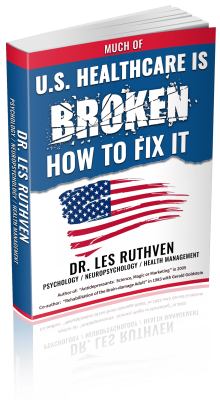Last updated on January 6th, 2024 at 08:34 am
Comparison of RIA performance scores of two groups
Shown below are the RIA performance results comparing 2 unique groups. One group was older adults (30 subjects) and the other was Wichita State students (59 subjects).
| Older Non WSU Students | WSU Students | ||||
| Mean Number Correct | Mean Time | Mean Number Correct | Mean Time | ||
| Subtest #1 | 9.4 | 0.35 | 9.14 | 0.31 | |
| Subtest #2 | 9.4 | 0.59 | 8.67 | 0.48 | |
| Subtest #3 | 6.1 | 0.55 | 8.87 | 0.48 | |
| Subtest #4 | 6.6* | 7.21* | |||
| Subtest #5 | 10.4* | 9.89* | |||
| * Out of 8 | |||||
| ** Out of 13 | |||||
The above three groups, at least in terms of their correct subtest scores and their Mean Reaction Times on the three Reaction Time subtests, are fairly consistent with each other in their scores. Since subtest #1 is a very simple RT test (“Press the space bar when any clock number lights up”) it is no wonder that the 2 groups were closer in their Mean correct and Mean RT scores on Subtest #1 than on the other 2 RT subtests. Without doing a statistical analysis, Mean correct RTs of the older group (all age 50 and over) do not significantly differ from the Mean RT of the students. However, with regard to speed of mental processing the younger students perform better (Mean RT 0.59 vs. 0.48 for the students.
Mean correct and Mean RT on subtest #3 is also consistent with what one might anticipate about their respective performances on the RIA. The college student group, being younger, had slightly better RT scores than the Older group and latter had fewer correct than the college groups on subtest #3. The writer suspects that on the 3 RT subtests the Mean RT of any individual is a much more meaningful score with regard to cognitive status than the Mean number correct on any of the RT subtests.
Subtest #4, correct scores for the two groups are what one might expect considering the greater age of the non-college group, 6.6 for the older group and 7.21 for the students. A score of 6.6 out of 8 in the Older group will most likely to be found in the non-impaired range but with age there is likely to be some “normal” decline in attention and memory, although the estimated age of the Older group was around age 50 ( range 30 to 75 ).
Correct scores on subtest #5, the most cognitively demanding of the five subtests, were quite similar across the two groups, which means that as long as the older person is healthy there is little or any decline of the higher level, executive functions over younger persons. RIA norms suggest a slight decline in speed of mental processing, attention and memory with age and there were no gender performance differences on the RIA in the 55 WSU students
As the RIA is used clinically across groups of the cognitively impaired the investigators will discover relationships between certain RIA scores, cognitive status (normal or impaired) and clinical diagnosis. It should be pointed out that the test was not designed to give a final diagnosis but simply to accurately identify those individuals with cognitive impairment as a first step in leading to a more timely and cost effective path to the final diagnosis of the impairing condition or conditions. However, our experience thus far with the RIA leads to a number of preliminary predictions about RIA performance and the cognitive status of the individual. We have already indentified in the above that with regard to the RT tests the more meaningful score with regard to cognitive status is the individual’s Mean RT ( and Standard Deviation) than the number of correct RTs on any of the 3 RT subtests. Moreover, if the individual has normal RTs on the 3 RT subsets, and if the individual’s RTs on both 2 and 3 are about 50% slower than RT on subtest 1, then normal cognitive status is found despite any other scores on the RIA. Impaired scores on subtest 4 and 5 within the context of normal RT and RT relationship scores reflect possible malingering, insufficient motivation to perform or some other factor or factors that are unrelated to actual cognitive status. In such cases the pattern of scores diagnoses normal cognitive status despite any number of “impaired” performances on the RIA. In the same manner the cognitive abilities assessed in subtest #5 are the most difficult and cognitively demanding of all of the other subtests and a good to very good performance on subtest #5 would warrant a diagnosis of normal cognitive status despite any “impaired” scores to the contrary.. However, some performances in the impaired range on the first 4 tasks, combined with a very good performance on task 5, might reflect a reversible brain dysfunction due mental health symptom problems, medication and a host of other causes for the brain impairment.
If the RIA proves to be a reliable and valid test in determining cognitive status, i.e., normal and impaired cognition, and if it proves to have little or no improvement in performance with repeated testing over time, the test may be used over a person’s lifetime to signal the onset of cognitive impairment and the need to investigate the source or sources of the impairing condition such as life style, mental health symptom disorders or brain damage/disease. The RIA may be used alone in any clinical setting and the test should be used under the guidance and supervision of a psychologist or clinical neuropsychologist. The test may be administered to normal or clinical populations by any staff person who is selected and trained to give the test by the supervising professional, although most people with computer familiarity and many patients can take the test on their own with information on how to access the RIA on anydesk top computer.
The RIA in a clinical, employee, or managed healthcare setting may be used alone or combined with an optional, accompanying Healthcare history survey and a behavioral health survey that the individual may fill out in case his or her RIA performance in the future every requires diagnostic intervention when and if cognitive impairment shows up in the individual with serial testing. The history of serial RIA performances in the database, the person’s Health History Survey and the Behavioral Survey will enable a psychologist/neuropsychologist to better direct the subsequent diagnostic process for a more timely and cost effective diagnosis of the patient’s impairing condition or conditions. The RIA diagnostic system for the early identification of individuals with cognitive impairment may result in a timelier and cost effective means of arriving at a final impairing diagnosis than the present system.



